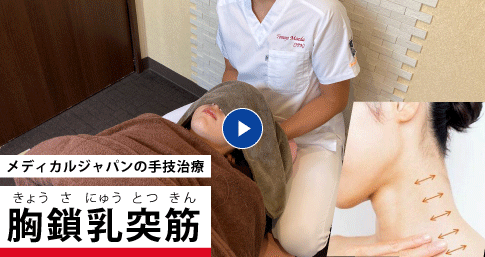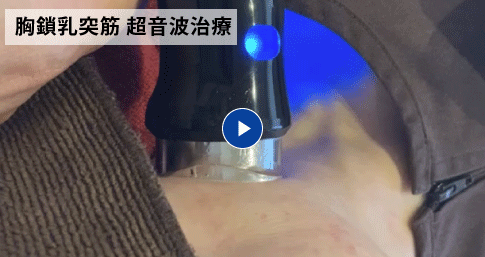straight neck
What is Straight Neck?
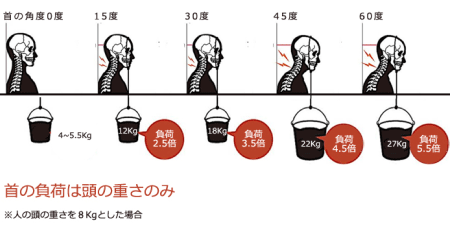
In recent years, the prevalence of “straight neck” has been increasing, especially among younger generations, due to the widespread use of smartphones and computers.
This condition refers to the loss of the natural curve of the cervical spine, causing the neck to become straight. Normally, the neck has a C-shaped curve that helps maintain proper posture and stability. However, in the case of a straight neck, this curve is lost, increasing the strain on the neck and potentially leading to various physical ailments.

There are two types of straight neck:
Muscular Straight Neck
This occurs due to prolonged poor posture, such as hunching forward and pushing the neck outward, leading to muscle stiffness.
Bone-Related Straight Neck
This occurs when the cervical vertebrae themselves become deformed. The vertebrae may be compressed, causing the spaces between them to narrow, resulting in an overall straightened cervical spine.
※Bone-related straight neck develops when muscular straight neck persists for a long time, affecting the vertebrae and intervertebral discs.
Causes
Muscular Straight Neck
One of the most common causes is poor posture. Long periods of forward-leaning positions, such as during computer work or smartphone use, can disrupt the natural curvature of the neck.
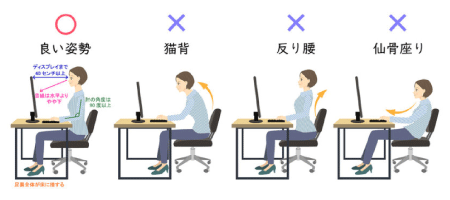
If the muscles around the neck are imbalanced, straight neck is more likely to develop. Specifically, when the muscles at the back of the neck (latissimus dorsi, upper triceps) are weak, and the muscles at the front (chest muscles, forearm muscles) are overly strong, maintaining the correct neck curvature becomes difficult.
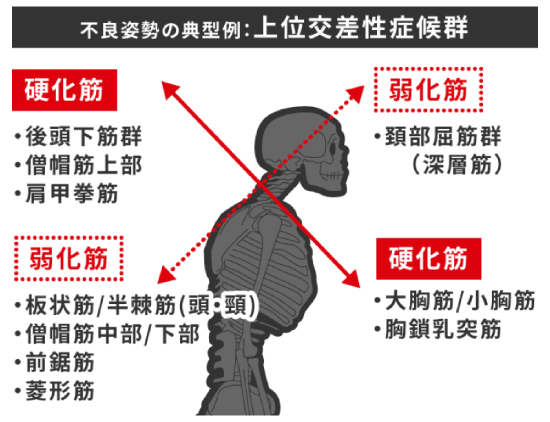
Bone-Related Straight Neck
Neck injuries caused by falls or car accidents can trigger the development of straight neck.
With age, decreased muscle flexibility and degeneration of soft tissues contribute to a higher likelihood of developing straight neck.
Symptoms
Straight neck can cause not only neck pain and stiff shoulders but also numbness and pain in the hands. When neck muscles become tight, they can compress nerves leading to the arms and fingers. Additionally, it may impact areas of the brain involved in visual information processing, potentially leading to eye fatigue.
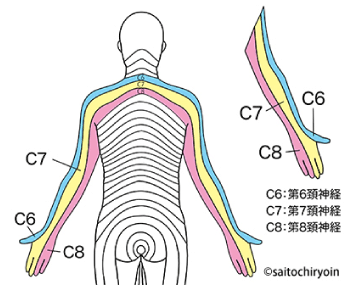
In particular, if you experience dizziness, nausea, or numbness in your hands, consulting a specialist is necessary. These symptoms may indicate worsening straight neck, making early intervention crucial.
Medical Japan Interventions
Prevention and Management

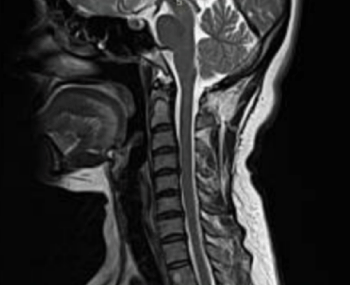
Cervical Spine Stretching
Stretching the neck and shoulders, along with core-strengthening exercises such as planks, helps prevent and alleviate straight neck. These exercises strengthen the muscles that support posture and reduce pressure on the neck. Particularly, stretches that relax the neck muscles and extend the chest and arm muscles are effective.

Maintaining Proper Posture
When using smartphones or computers, taking regular breaks and being mindful of posture is essential. Reducing screen time and positioning devices at eye level can help minimize strain on the neck. Additionally, the height of the pillow used during sleep can impact neck health, so choosing an appropriate pillow is recommended.
Pillow Diagnosis
Using a pillow that suits your body helps prevent excessive tension in the neck and shoulders and reduces the strain on a straight neck.
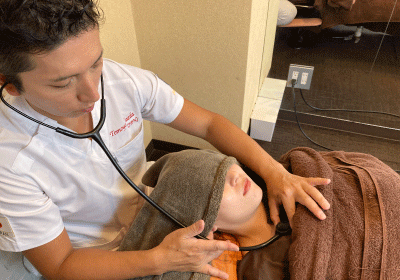
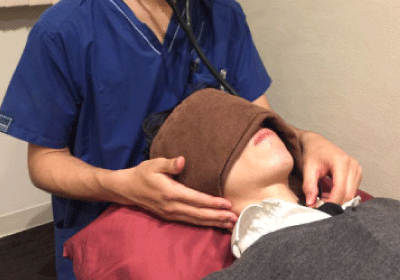
Our unique pillow diagnosis system utilizes rehabilitation techniques for breathing and swallowing (by Dr. Nobuta Inoue) and stethoscope work (Littmann model made in the USA) to recommend the correct pillow height for clients.
Sternocleidomastoid Muscle Approach Manual Therapy
The neck consists of a complex network of muscles and nerves, along with large blood vessels that supply nutrients to the brain. By incorporating breathing techniques and posture correction, we aim to improve range of motion and flexibility. To ensure early recovery, we provide personalized counseling, customized treatments, and tailor-made therapy for each individual.
Sternocleidomastoid Muscle Approach Ultrasound Therapy
Ultrasound is precisely applied with either a non-thermal or thermal effect. Ultrasound increases blood flow in the spinal arteries and arterial plexus through deep heat therapy. Additionally, a combination of high-frequency and ultrasound therapy devices (Astron) is used to relax muscle tension and suppress pain transmission.
Home Care for Sternocleidomastoid Muscle: Relieving Tension and Pain
When performing self-care at home, it is important to follow these precautions:
※ Changes in effectiveness: If the pain increases or new symptoms appear, stop immediately and consult a medical professional.
※ Take your time: Performing exercises too quickly may prevent proper muscle relaxation and reduce effectiveness.
※ Moderate intensity: Excessive force may damage muscles. If you feel pain, reduce the intensity or stop the exercise.
Rehabilitation Exercise + Breathing Techniques

Balance issues are not only caused by muscle and bone problems but also by body tension, which can lead to shallow breathing and reduced metabolism. This, in turn, may contribute to unexplained symptoms and severe conditions. We provide thorough guidance on simple exercises that can be done at home.
Rehabilitation Exercise + Breathing Techniques
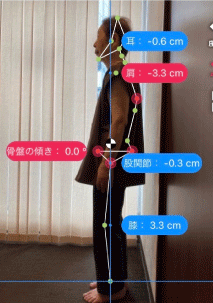

Recommendation from a Doctor
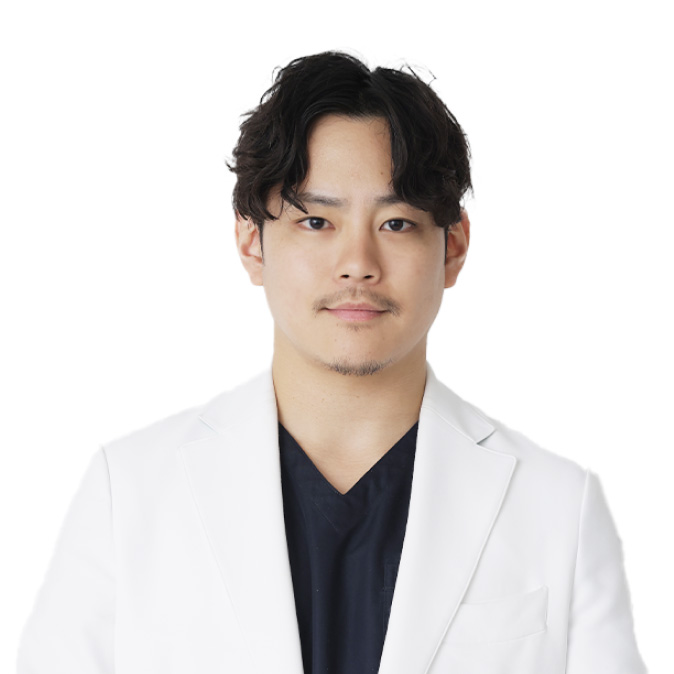

Background & Achievements
– Graduated from Kyoto University, Faculty of Engineering, Department of Applied Physics
– Completed Special Training at Harvard Medical School
– Graduated from Nara Medical University
– Cosmetic Surgeon, Dermatologist, Orthopedic Surgeon
I am Dr. Ryohei Tsuchida, the director of Tokyo Bisen Clinic Shibuya. At our clinic, we utilize specialized knowledge in orthopedic surgery to address various musculoskeletal conditions. We also have an X-ray room for highly accurate diagnostics.
While we address a wide range of musculoskeletal symptoms, I highly recommend the treatments provided by Medical Japan as reliable therapeutic methods.
For example:
Acupuncture & Chiropractic for Fundamental Pain and Numbness Relief
Addressing the root causes of pain and numbness, such as stiff shoulders, lower back pain, arthritis, myofascial pain syndrome, and neuralgia, to promote long-term recovery.
Rehabilitation and Evaluation Analysis to Prevent Recurrence
Developing personalized rehabilitation plans based on detailed assessments to prevent recurrent issues such as knee and shoulder joint disorders and chronic lower back pain.
Training to Strengthen the Body
Strengthening the body post-recovery to prevent recurrence, sports injuries, and muscle deterioration.
Medical Japan provides comprehensive health support based on scientific evidence. I particularly recommend it to those suffering from musculoskeletal issues such as stiff shoulders, lower back pain, arthritis, myofascial pain syndrome, and sports injuries.
